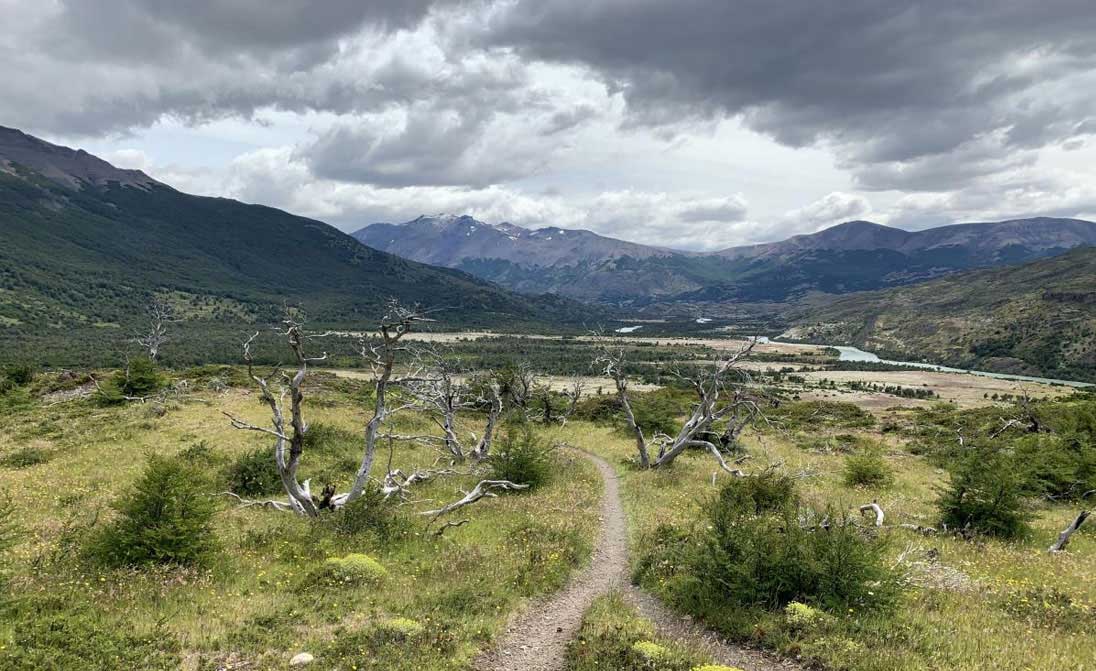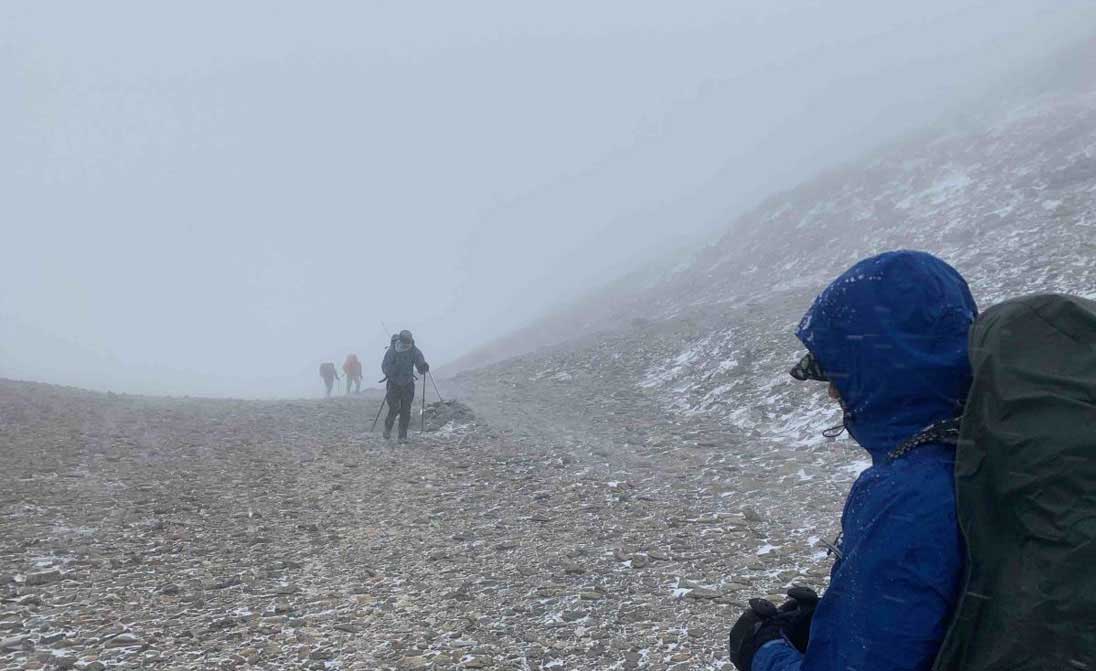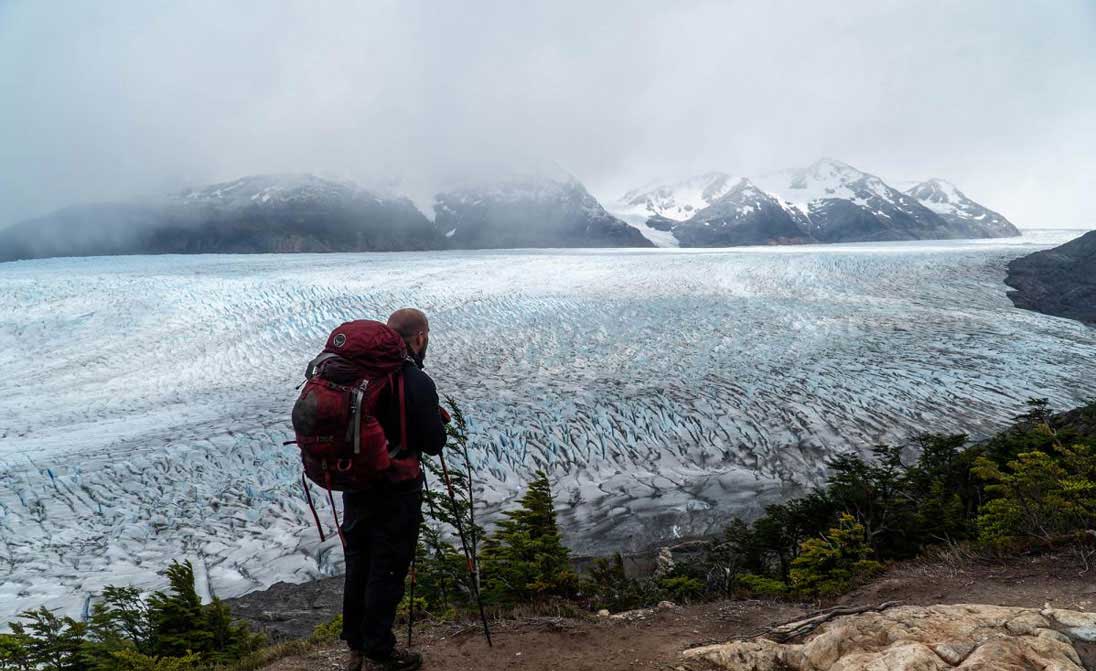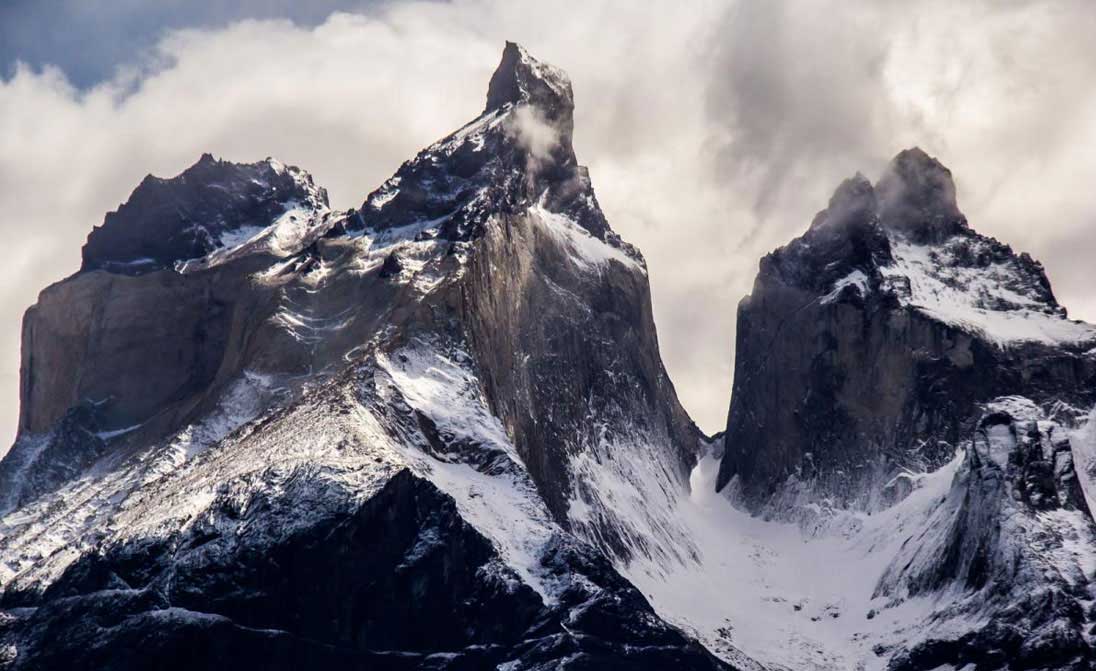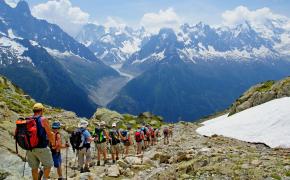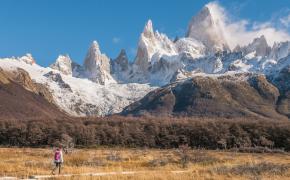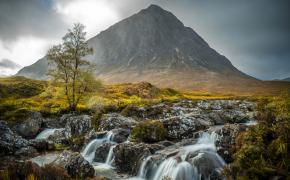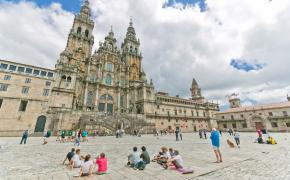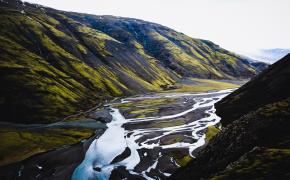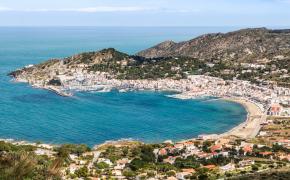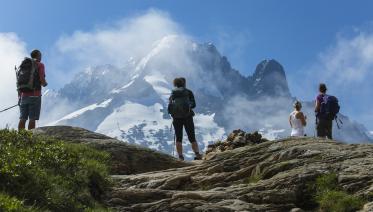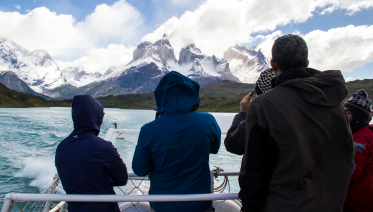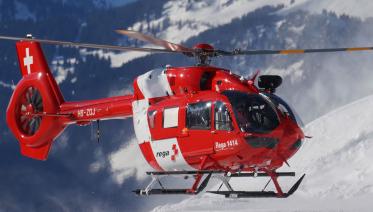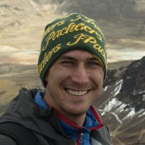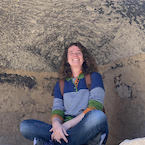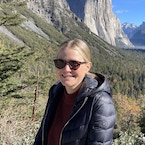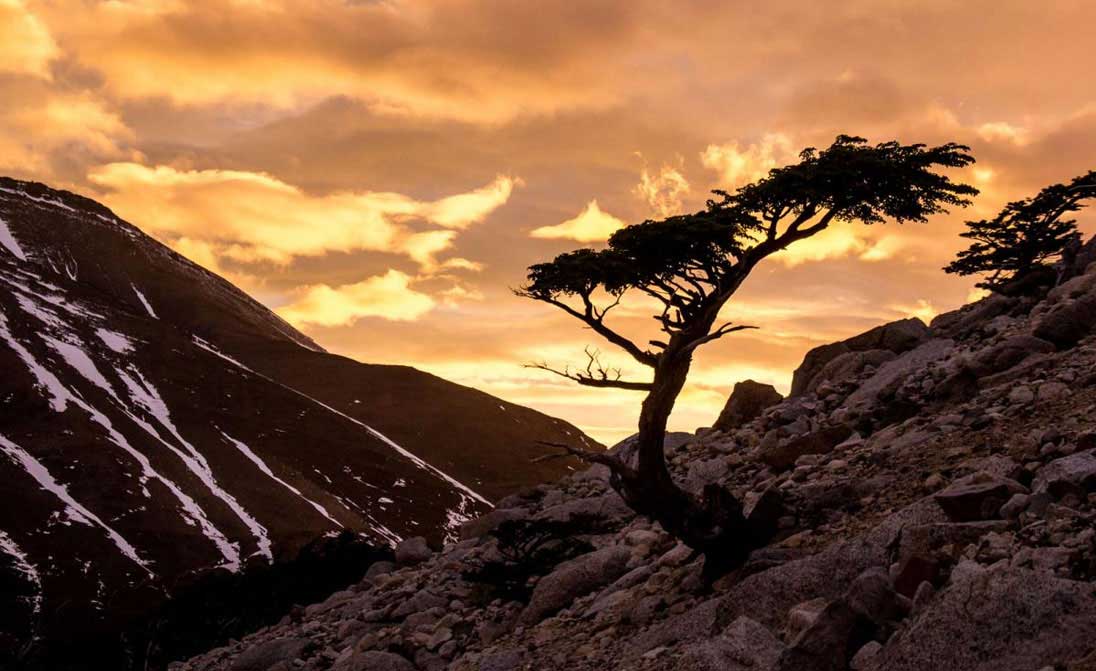
To paraphrase our own description of the O-Trek, the only thing that differentiates it from the iconic W-Trek is four stages, three nights, and 30 miles (50 km). But for some people, that can make all the difference in the world.
The O-Trek is also sometimes called the “O” Circuit because that’s exactly what it is: a circuit around the Cordillera del Paine mountain group, connecting both ends of the “W.” To be clear, the W-Trek is part of the O-Trek and makes up for the majority of its length. Those who set out on the O-Trek get to experience all the breathtaking sights of the famous W after enjoying the pristine wilderness of the backcountry. Trail difficulty levels for both treks are pretty similar, but O-Trekkers must hike a longer total distance with more supplies and put up with fewer creature comforts (but only for a few nights). This can be challenging and might be a deal-breaker for those trying to decide between the two treks.
The differences between the two treks break down into three general categories: the trail itself and the sights along the way, the accommodation choices, and the people on the trail.
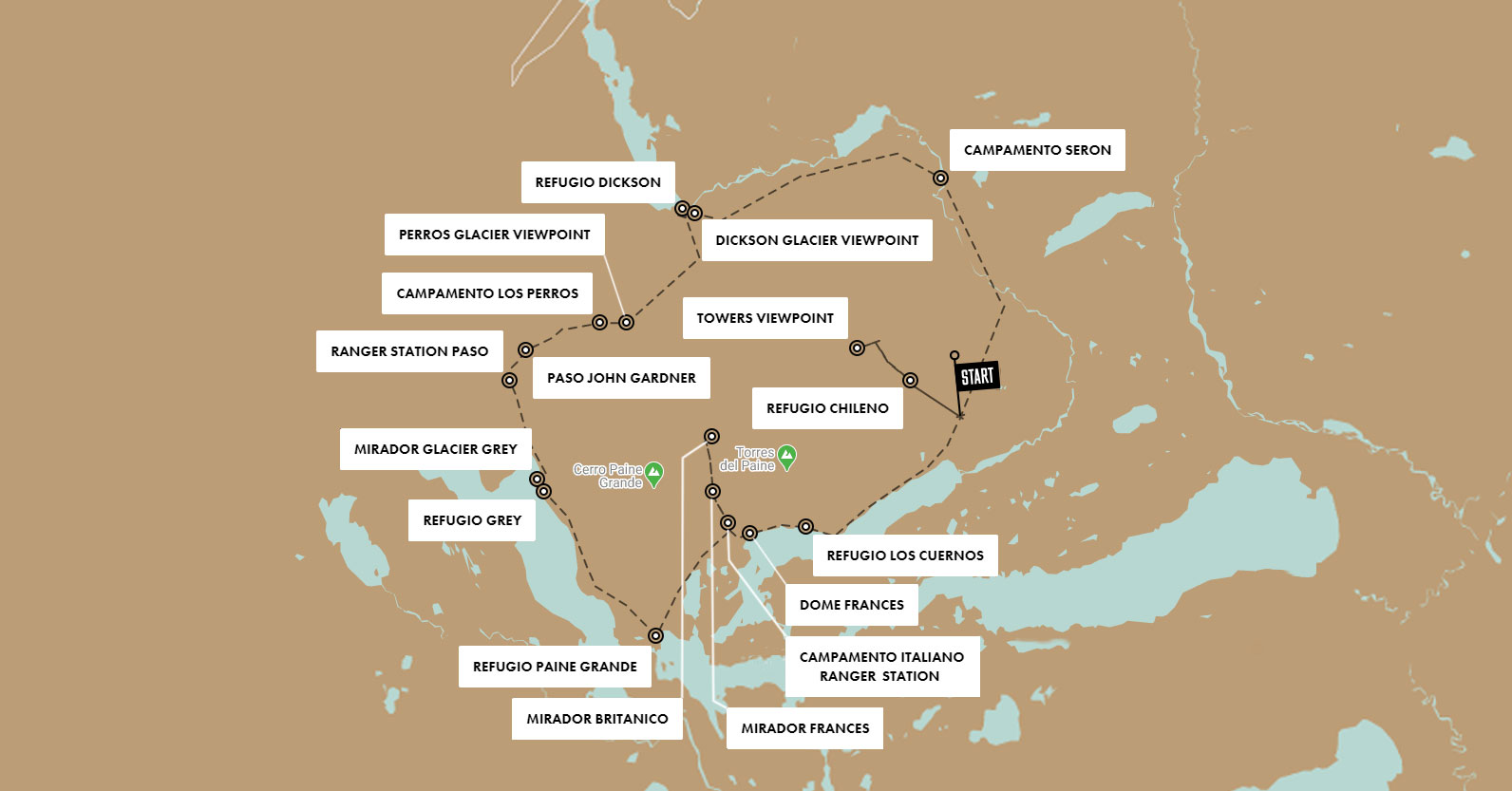
TRAIL & SIGHTS
The O-Trek between the two endpoints of the W-Trek, the “backside” of the park, isn’t exactly tougher than the frontside (with the exception of John Gardner Pass). But there’s more of it, and it can be more exhausting.
One difference between the two treks is the degree of flexibility. Hikers on the O-Trek are only allowed to hike the circuit counterclockwise, while hikers on the W-Trek are free to hike east to west or west to east. The reason for this is that park administrators want to regulate how many people are on the backside of the park at any one time, a point we will get to later.
You may not know the names of the sights on the backside like those on the frontside—Cuernos, Torres, Nordenskjöld. But they are no less spectacular, and some of them, like the view of Glacier Grey from the top of John Gardner Pass, are as breathtaking as any of the big names on the front. But hikers enjoy the full spectrum of views in the Torres del Paine park: its rolling, tree-covered hills; snaking rivers, peaceful lakes, and the glaciers that feed them; forested valleys, and, rising above it all, snow-capped mountains. Notable sights are Dickson Lake, Los Perros Glacier, and distant views of the Southern Patagonian Ice Field, the world’s second-largest ice field, outside of the polar regions.
Things are much more remote on the backside. This is good, because it means the terrain is in a more pristine state. This is bad, because it means help is much farther away. Hikers on the O-Trek must be careful to avoid injury, because mountain rescue can take a long time to get to them—even longer than on the W-Trek, where response times aren’t exactly speedy.
The crux of the backside section is climbing to John Gardner Pass, which is the highest point of the O-Trek at 4,072 feet (1,241 meters). This section is tough not so much because of the incline, which is reasonable, but because the weather conditions can be brutal. Harsh winds dominate the Torres del Paine park in general, and back here they blow snow onto the trail, obscuring it from view. Hikers must keep a careful eye out for the trail markers. The challenging weather conditions, plus the extreme remote nature of this section, can make John Gardner Pass a very difficult climb. Those who are strong enough to get up Valle del Frances or to the Torres should be able to handle it, but must nevertheless prepare for a challenge. About ten minutes after the top of the pass, hikers are treated to amazing views of Glacier Grey stretching out for miles below.
ACCOMMODATION
The backside of the Torres del Paine is a camper’s paradise.
There are three places to spend the night back here, in this order: Campamento Serón, Refugio Dickson, and Campamento Perros. The restriction on the number of hikers on this part of the trail means that accommodation options don’t really need to be so robust.
As their names imply, Campamento Serón and Campamento Perros, are for camping only. No triple-decker bunk beds here, sorry. Both campsites have tents to rent for a fee, but you’re also welcome to bring your own camping gear along, which is the most economical option. At Refugio Dickson, you can sleep in either a tent or one of their 6-person shared dormitories.
Only the first two accommodations, Serón and Dickson, have restaurants for campers. Serón treats hikers to a three-course dinner, and Dickson has a fixed menu for dinner and breakfast. Both have minimarkets where you can pick up more food and snacks for the trail. Campamento Perros doesn’t have a restaurant, but they do serve breakfast and dinner. If you want to cook your own meal, you will have to pack in ingredients and cooking equipment. Perros also has a small market that offers snacks, basic equipment and gas for cookers.
The good news is that, after spending some time in the backcountry, the luxury of Refugio Grey will be so much sweeter.
SOCIAL SCENE
What to say about the people on the O-Trek backside? To start with, there’s fewer of them. There is a noticeable difference in trail population once the O-Trek meets back up with the W-Trek. A lot of hikers appreciate having fewer people around, and we find it makes the backside much more peaceful than the frontside.
Perhaps because there are fewer people on the backside, or because hikers back here are more adventurous, they tend to be a bit more open. The Patagonian backcountry attracts people who love, well, the backcountry, and they come from all over the world. Enjoying the untouched nature of Torres del Paine with your new friend from the other side of the planet is one of the special opportunities the O-Trek offers. There’s a greater sense of camaraderie on this part of the O-Trek, and here you’re as likely to go home with warm memories of the people you meet as you are memories of the trail.
CHOOSING YOUR TREK
Tom Petty said “waiting is the hardest part,” but we think choosing is the hardest part. If you need help deciding if the O-Trek or the W-Trek is right for you, we’d be glad to help. Send us an email any time or call us at 1-414-377-3555 for a free consultation. We’re glad to help you decide how to enjoy the legendary Torres del Paine National Park.




